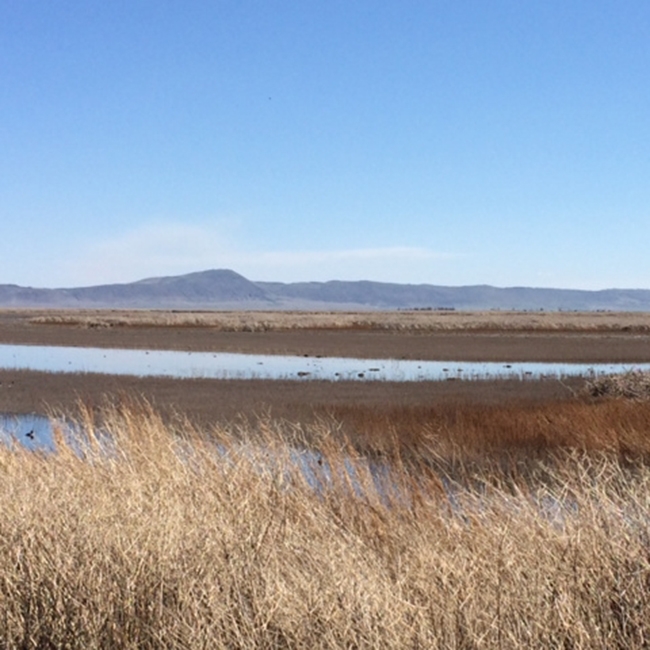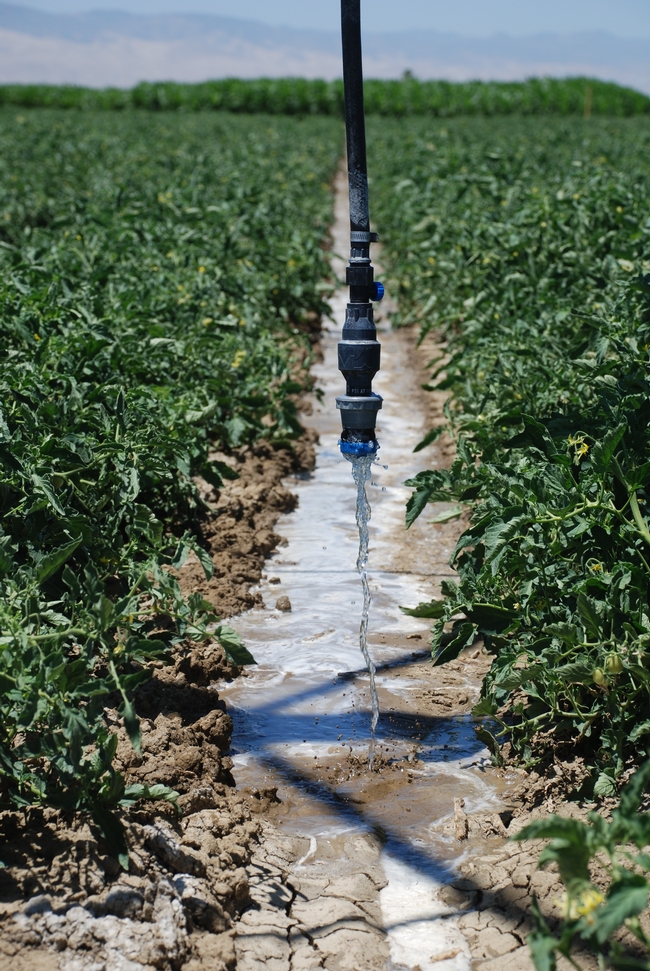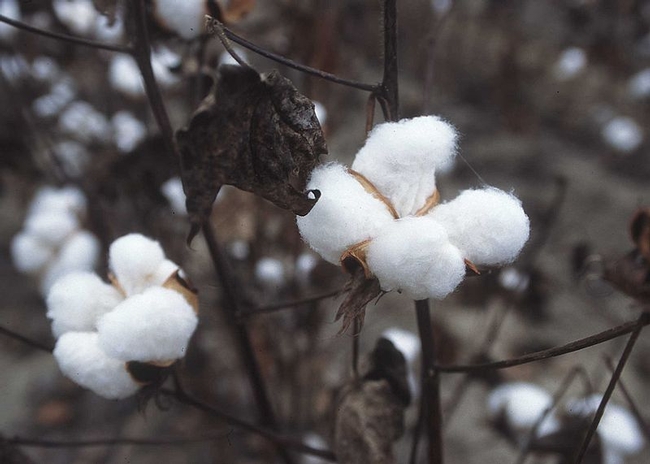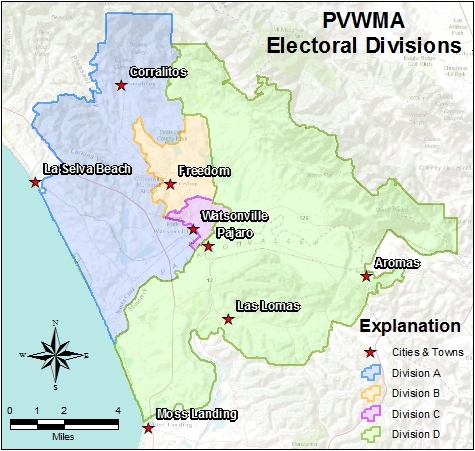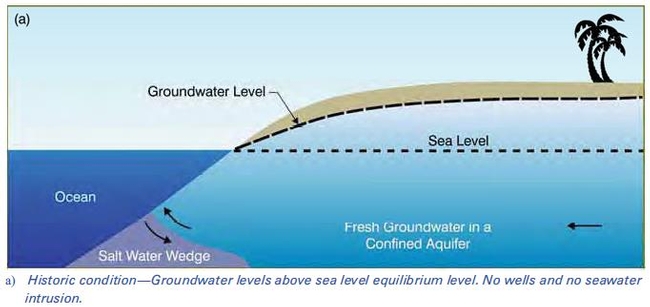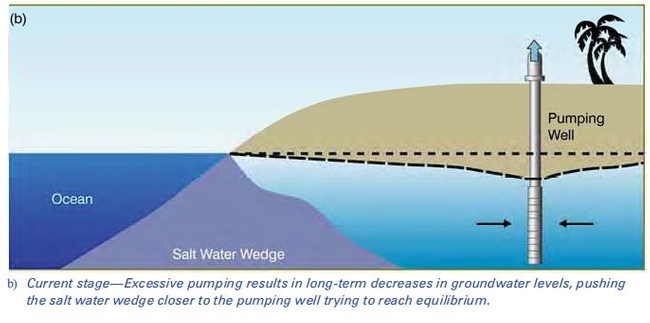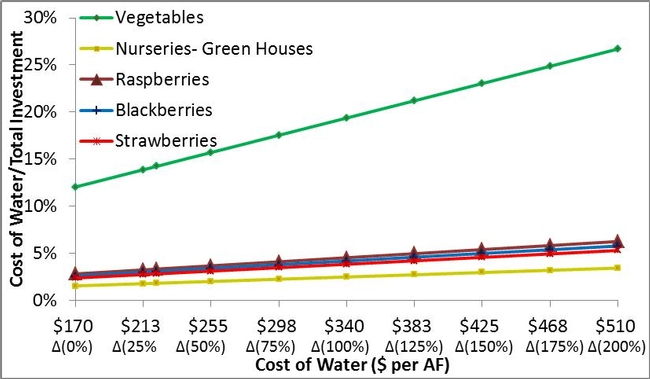Posts Tagged: Water
How are you conserving water?
People, animals and plants all need water to survive, yet we have less than 1 percent of the earth's water available for our use. And our water supply is diminishing. This year's record California drought conditions mean that now, more than ever, every drop counts.
The average household uses 30 percent of its water outdoors for landscaping and gardening. Inside the home, the majority is used in the bathroom. Just shortening your daily shower by a minute or two can save as much as 700 gallons of water every month!
Pool your knowledge
On May 8, 2014, we're asking you to tell us what you are doing to conserve water. Have you started to take shorter showers? Invested in low-flow faucets and toilets? Let your grass go brown or swapped it for drought-tolerant landscaping? If you're a farmer, do you use new, higher-efficiency irrigation technology?
Maybe you already are conserving water; maybe you aren't. Either way, we want to know about it—and remember, in a survey like this there's no wrong answer. Your answers will help create a clearer picture of what all of us are doing—and can do—to protect our water resources.
Build a more secure future for you and your community in five simple steps:
STEP 1: On May 8, 2014, go online and visit the map at beascientist.ucanr.edu/water. Click on the picture of the map on the right.
STEP 2: Enter your ZIP Code or zoom to your current location on the map.
STEP 3: Click on your location.
STEP 4: Use the online checklist to select all of the ways you are conserving water in your home, garden, landscape, or on your farm.
STEP 5: Attach a photo showing how you're conserving water!
On May 8, 2014, get out there and be a scientist. Tell us where food is grown in your community. Your answers will help build a healthier future for your community, and for the state.
Other ways to join the fun:
- Are you a teacher? Educator? Parent? Youth group leader? Download our lesson plans and activities from our food activity box.
- Pledge a tweet or Facebook status. Join our Thunderclap campaign and donate a tweet or a Facebook status to #BeAScientist on May 8.
- Join the online conversation by following #BeAScientist on Facebook, Twitter and Instagram.
- Learn more about this project by reading our Fact Sheet.
Earth Day conservation tips come from UCCE
The article focused on the Earth Day festivities at UC Merced, but the water-savings tips came from David Doll, UC Cooperative Extension advisor in Merced County. A large fraction of home water use happens in the yard. Doll said reducing lawn watering time and fixing broken sprinklers are important first steps to water conservation.
Grass lawn can use more water than many agricultural crops - including almonds, walnuts and tomatoes. Generally residents can cut back lawn irrigation and keep it green.
Doll shared a simple test to prevent excessive landscape irrigation. Pinch the soil between the thumb and index finger. If dirt crumbles and falls away, it needs water. But if it forms into a ribbon one-inch wide or longer, it can go another day or two without water, Miller reported.
Water conservation is part of the citizen science project being launched May 8 by UC Cooperative Extension to mark its 100th anniversary. On the Day of Science and Service all Californians are asked to report their water saving strategies. To participate, go to http://beascientist.ucanr.edu.
How are you conserving?
People, animals and plants all need water to survive, yet we have less than 1 percent of the earth's water available for our use. And our water supply is diminishing. This year's record California drought conditions mean that now, more than ever, every drop counts.
Californians currently use an average of 196 gallons of water per person per day, including all business operations other than agriculture. The average household uses 30 percent of its water outdoors for landscaping and gardening. Inside the home, the majority is used in the bathroom. Just shortening your daily shower by a minute or two can save as much as 700 gallons of water every month!
Did you know that if everyone in the state reduced her or his water consumption by 10 gallons a month, California would save a total of 4.56 billion gallons every year?
The University of California is pledging to reduce its water consumption by 20 percent by 2020. Now we want to know, how are you conserving?
On May 8, 2014, we're asking you to tell us what you are doing to conserve water.
Have you started to take shorter showers? Invested in low-flow faucets and toilets? Let your grass go brown or swapped it for drought-tolerant landscaping? If you're a farmer, do you use new, higher-efficiency irrigation technology?
Maybe you already are conserving water; maybe you aren't. Either way, we want to know about it — and remember, in a survey like this there's no wrong answer. Your answers will help create a clearer picture of what all of us are doing — and can do — to protect our water resources.
Build a more secure future for you and your community in five simple steps:
STEP 1
On May 8, 2014, go online and visit the map at beascientist.ucanr.edu/water.
STEP 2
Enter your ZIP Code or zoom to your current location on the map.
STEP 3
Click on your location.
STEP 4
Use the online checklist to select all of the ways you are conserving water.
STEP 5
Attach a photo showing how you're conserving water!
Visit beascientist.ucanr.edu to learn more about this project and record your observations.
For an overview, see the video below:
Content of this post by the education team: Steven Worker, Melissa Womack, Marisa Neelon, Karey Winfield-Royas, Pam Kan-Rice and Jennifer Rindahl. Video production by Alberto Hauffen.
Drought news dominates the headlines
NBC News spoke to Doug Parker, director of the California Institute of Water Resources, about drought implications already being felt in the California agricultural sector.
He said an estimated 500,000 acres of farmland sits unplanted due to water shortages, a number that could nearly double if the drought extends into 2015.
"In the long term, it could change some of the cropping patterns in California, especially for the animal industry," Parker told NBC, explaining that the economics of raising and tending livestock hinges on locally grown feed. "Without water to grow it, you really end up just having to sell off animals." Much of the state's beef cattle, for example, roam unirrigated rangelands that are parched.
Parker was also quoted in a drought story by Aljazeera America, which focused on Gov. Brown's $687 million emergency drought plan.
“I think it's a good first start,” Parker said. “But I don't think this will be the end of it.”
Gov. Brown's proposal doesn't provide funding for long-term solutions to California's water problems, but it could provide much-needed immediate assistance to many of the driest communities.
Capital Press spoke to Alan Fulton, UC Cooperative Extension advisor for Tehama, Colusa, Glen and Shasta counties, about the U.S. Bureau of Reclamation's dire 2014 surface water allocation plan. He said most farmers will rely on groundwater to get through the season.
"The main thing that will happen is just improving their wells and making sure they're operable,” Fulton said. “They're trying to manage through the drought with hopes of a wet year next year.”
Mother Jones featured a drought story rich with infographics outlining the surprising amount of water required to grow common food crops and the amount of water used per person per day in California communities. The article includes commentary from Jay Lund, professor of civil and environmental engineering at UC Davis, about the future of agriculture in the Golden State.
Lund said the state's current water problems mean agriculture may soon play a less important role in California's economy, as the business of growing food moves to the South and the Midwest, where water is less expensive. Production rates for thirsty crops like alfalfa and cotton have already diminished significantly in the last few years, Lund said. Between 2006 and 2010 alone, the amount of land irrigated for cotton fell by 46 percent.
Optimizing irrigation may ease groundwater overdraft in Pajaro Valley
In the Pajaro Valley, an agricultural region in Monterey County, residents are being proactive about water conservation policies and seeking ways to save water.
Groundwater makes up roughly 90 percent of the water delivered by Pajaro Valley’s Water Management Agency (PVWMA). There is a current overdraft of groundwater in the aquifers of this region, which calls for immediate action to protect their water source. Historically, the amount of groundwater in the aquifer was above sea level so the amount of salt water in the freshwater aquifer was kept at bay. Removing too much water from the ground at a faster rate than it is being replenished has caused seawater from the Pacific Ocean to enter the aquifer as the water level tries to even out. This seawater intrusion impairs water quality because saltwater is too saline for both agriculture and human consumption.
PVWMA is implementing seven different projects to control this seawater intrusion. One of these projects is their agricultural conservation program.
Agricultural conservation program
PVWMA asked Samuel Sandoval Solis, Ph.D., UC Cooperative Extension specialist in the Department of Land, Air and Water Resources at UC Davis, to help them with their agricultural conservation program. PVWMA wanted to know the volume water that could be potentially saved and the resulting economic impact of water savings on the valley.
The key to agricultural water savings is to water a crop to its evapotranspiration (ET) value. The ET value indicates optimum water amounts that should be applied in order for the water to be completely beneficial to the plants. To estimate the potential water savings, Sandoval and his UC Davis team – undergraduate student Vicki Lin and Ph.D. students Jenna Rodriguez and Belize Lane – had to determine how many growers were surpassing a crop’s ET value. The scientists interviewed growers to find out the volume of water each grower applied to the crops and the amount of money they invested in crop production. A statistical analysis was completed with applied water data of growers from PVWMA, information from the growers’ interviews, and expert-provided ET values to check for accuracy.
The scientists also analyzed land-use data sets from 2009 and 2011 for this project. The analysis focused on 2009 because it was a normal year in terms of groundwater extraction. They determined that Pajaro Valley can save between 4,600 and 5,100 acre feet per year through conservation. This agricultural water savings program is anticipated to contribute to 41 percent of the region’s total water savings just by using water more efficiently.
Vegetable growers would take hard hit
This increase in water savings results in a direct decrease in revenue for PVWMA ranging from $842,000 to $929,000. To compensate for this loss in revenue, a potential increase in water extraction fee rates was analyzed. An increase in water fees will affect farmers, especially vegetable crop growers in the coastal region of Pajaro Valley because they already put 60 percent of their total net profits into their investment cost. These coastal vegetable growers currently receive estimated revenue of $3,910 per growing season. If their water rates are increased by 50 percent, or $103/AF, their revenue will be decreased 6.7 percent ($265) per growing season. The economic impact graph at right shows how an increase in rates will affect farmers, substantially lowering their net profit on crops. Growers of strawberries, raspberries, blackberries and nurseries have a larger return on their investments, so an increase in water fees will not affect them as dramatically.
The full 37-page report on this project can be downloaded from a link at the top of http://watermanagement.ucdavis.edu/cooperative-extension/water-savings-agriculture.


